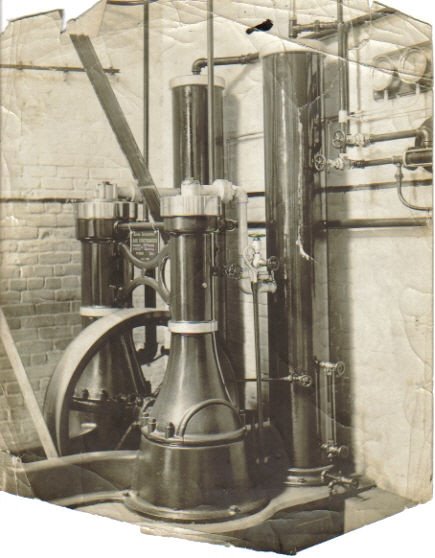


Water vapour also causes exhaust freezing in motors the escaping air expands rapidly, which requires a great deal of heat energy. The pipe was above ground and could expand about a metre each 1.6 km on a hot, sunny day.Ĭompressed air must be dry because through friction, humidity decreases the efficiency of both the pipeline and the motors using the air. The 51 cm diameter steel transmission pipe had telescopic expansion joints every 0.8 km to allow for the effects of temperature change. The receiver then carried the compressed air to a valve house where it was transmitted to Cobalt and area mines for distribution. The chamber collected the compressed air and channeled it to a receiver pipe, 61 cm in diameter. At the base of the shaft were two steel-sheathed concrete cones which broke the initial impact of the air-water mixture, and directed the flow into the horizontal chamber. This was designed to decrease the pressure in the pipe and allow the air bubbles to collect and merge. As well, the two intake heads, each made up of 72, 36 cm pipes, could be raised or lowered to maintain a constant depth over the bulkhead, usually about 46 cm of water.įrom the heads, the water was fed into one pipe which widened just before the bottom. There were control gates to limit the amount of water entering the plant works. Its intake shaft is 107 m deep and the tunnel-chamber had a blow-off valve to prevent increased pressure.

Ragged Chute was specifically designed to produce air compressed to 862.5 kPa (gauge). At one time, this was nearly 40 kilometres of pipe. Nearly 90% of the pipes remain and can be seen along the roadway going to Hound chutes. As a result, the famous geyser-like blow-off from the plant no longer exists. Today, the plants and some of the pipes that carried the air-power to the mines have been removed. Only twice in its 70-year history was the plant closed for major repairs although, at one time, a dozen mines purchased thousands of cubic metres of compressed air each month.

In 1945, Ontario Hydro purchased the Ragged Chutes plant to supply local mines with the compressed air created there. While under construction, in the early years of this century, a community of workers did live on the site. Since it was built in 1910, Ragged Chute practically ran itself. In the course of his experiments, Taylor discovered that the air pressure and horsepower created could be increased or decreased by altering the length and diameter of the intake shaft, and by changing the volume of water entering the works. He designed the chamber in such a way as to allow the water to flow through, and at the same time cause the air to compress. Using this principle, Taylor determined that an efficient method to harness hydraulic air-compression would be to drop the air-water mixture through a shaft to an underground chamber. The air compresses, and not the water, because the molecules in a liquid are already very close together and, therefore, are almost impossible to compress. To Taylor’s creative mind, the explanation was simple – when a mixture of air and water is compressed, the air separates and rises. When they were pierced, compressed air escaped. One spring he observed the movement of the Ottawa River and, as water flowed over a dam and under the ice, noticed that peculiar domes rose from the surface of the ice. Taylor invented the hydraulic air compressor while living in Montreal. Today, though, mines purchase electricity to run their own air compressors. Compressed air, rather than electricity, was the main power source used by heavy mining equipment such as drilling machines, grinders and hoists. At Ragged Chute, 16 km southeast of Cobalt on the Montreal River, was the world’s only water-powered compressed air plant.īuilt in 1910, at the peak of the Cobalt silver boom, the Ragged Chute Compressed Air Plant transmitted air-power to the local mining industry.


 0 kommentar(er)
0 kommentar(er)
